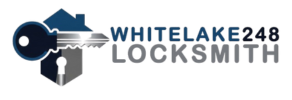Office security thrives on clear permissions and dependable technology. Access control brings both together by deciding who may enter, when they may enter, and which areas remain private. Instead of relying only on keys that can be shared or copied, a modern system creates unique credentials, tracks activity, and adapts as your team changes. The result is a safer workplace with fewer interruptions, stronger oversight, and a better experience for staff and visitors. With thoughtful planning, your organization can adopt access control in a way that supports culture, compliance, and daily operations without slowing anyone down.
Begin with a Practical Risk Review
A strong access program starts by understanding real risks. Map how people move through the space from lobby to work areas to storage rooms. Identify sensitive zones such as finance offices, server rooms, labs, and document archives. Consider how deliveries, cleaners, and contractors enter and exit. Note doors that are propped open, shared keys, or doors that latch poorly. This review reveals where controls will deliver the most value and where a light touch is enough. The goal is simple. Apply the right level of protection to each doorway while keeping daily movement smooth and friendly.
Select Credentials that Fit Your Team
Cards, fobs, mobile passes, and biometrics each offer advantages. Cards and fobs are familiar and quick to distribute. Mobile passes ride along on devices your team already carries and can be updated instantly. Biometrics strengthen identity checks for highly restricted rooms while removing the need to carry anything at all. Many offices mix methods, using mobile passes for general entry, cards for visitors, and biometrics for critical spaces. Choose options that align with your culture, privacy expectations, and regulatory duties so adoption feels natural rather than forced.
Create Clear Access Policies
Technology works best with simple rules everyone understands. Define who may enter each zone, during what hours, and under what conditions. Outline a straightforward process for requesting additional access and a schedule for reviewing permissions. Establish expectations for tailgating, door propping, and sharing credentials. When policies are short, plain, and consistent, people follow them. Post concise reminders at doors and inside onboarding materials so guidance is never hard to find. Clarity reduces friction and makes exceptions easier to handle.
Integrate with Directories and HR Systems
Manual updates invite mistakes. Connecting access control with your directory or human resources platform keeps permissions aligned with real roles. When a new hire starts, basic access appears automatically. When a role changes, permissions adjust in step. When someone departs, access ends without delay. This connection creates a dependable record of who can go where, reduces administrative tasks, and helps auditors verify that the right people hold the right keys at the right time, all without spreadsheets or repeated data entry.
Design Thoughtful Visitor Management
Visitors deserve a welcoming and secure experience. Provide a simple check in at reception with temporary credentials that expire automatically. Pair visitors with hosts who escort them through restricted areas. Label guest passes clearly so staff can assist with wayfinding. If your space requires confidentiality, add basic acknowledgments at check in. At the end of a visit, returns should be effortless so passes do not linger. A smooth process protects people and property while leaving a positive impression on clients and partners.
Harden Perimeter and Protect Critical Rooms
Not every door needs the same treatment. Exterior entries benefit from durable readers, reinforced strikes, and door contacts that alert when a door is held open too long. Sensitive spaces such as server rooms deserve stronger verification, event logging, and alerts for unusual activity. Storage rooms and mail areas benefit from scheduled access, granting entry only during working hours. Matching controls to door importance limits cost while raising actual security, a balance that keeps projects achievable and effective.
Pair Access Control with Cameras and Alerts
Visibility strengthens response. Linking door events with cameras helps verify what happened during an alert, whether it is an open door in the evening or repeated failed attempts at a reader. Real time notifications to facilities or security staff speed up investigations and discourage casual tampering. When an incident occurs, synchronized timelines show the exact sequence from approach to entry, assisting resolution and training without guesswork. Thoughtful monitoring empowers people, not just logs.
Plan for Power and Network Resilience
Doors should function even when the building faces an outage or a network hiccup. Choose controllers and readers that cache rules locally so badges still work. For life safety, ensure doors fail safe or fail secure according to code and emergency plans. Add backup power to core panels and network gear that keeps the system alive during brief interruptions. Regularly test failover behavior so there are no surprises. Resilience keeps people safe and limits downtime during unexpected events.
Simplify Onboarding and Offboarding
New teammates feel welcome when access just works on day one. Create role based templates with default zones so provisioning is quick and consistent. For contractors and interns, use end dates that remove access automatically. When someone leaves, revoke credentials immediately and collect physical tokens without delay. A tidy process protects the workplace, shortens setup time, and reduces help desk requests. Consistency also provides clean records that stand up during audits or compliance checks.
Train for Everyday Situations
People are the heart of any security program. Offer brief, friendly training that shows how to present a badge, request assistance, and report a stuck door or suspicious activity. Encourage staff to avoid holding doors for unknown visitors and to route deliveries through proper entrances. Keep instructions short and visual so they are easy to recall. When everyone knows the basics, the system performs better, and small issues are fixed before they grow into incidents.
Use Analytics to Improve
Access logs are more than records. They reveal patterns that guide better decisions. Spot doors that are propped open, identify zones with repeated failed attempts, and find schedules that need adjusting. Seasonal trends may suggest adding a reader at a side entrance or changing cleaning staff routes. Share insights with facilities and leadership so improvements are coordinated. Turning data into small, steady refinements keeps security aligned with how your office truly operates.
Address Privacy with Care
Good security respects the people it protects. Explain what information the system collects, how long records are kept, and who can view them. Limit access to logs to roles that genuinely need it. When using biometrics or mobile credentials, provide alternatives for those who prefer a different method. Clear communication builds trust, reduces rumors, and helps everyone feel comfortable with the protective tools around them. Privacy and security can reinforce each other when handled thoughtfully.
Prepare for Emergencies
Access control should support safe evacuation and rapid response. Coordinate door behavior with fire systems so exits open as required. Provide first responders with clear entry paths and contact details for building leads. Practice scenarios where systems must unlock or lock down quickly. Document steps for restoring normal operation after an event. Preparedness transforms technology into a reliable partner during stressful moments and reassures staff that safety comes first.
Maintain, Review, and Refresh
Like any essential system, access control benefits from steady care. Schedule routine inspections for readers, strikes, hinges, and door closers. Replace worn cards and weak batteries before they fail. Review permissions on a regular cadence to remove stale access and align roles with reality. Revisit policies when your space expands or teams reorganize. These simple habits keep doors working smoothly, lower support tickets, and protect the investment you have made in safer, smarter entry.
Bring It All Together
Improving office security with access control is not just a hardware project. It is a people and process project supported by dependable tools. Start with a practical risk review, choose credentials that suit your team, and write policies that anyone can follow. Integrate with the systems you already use, welcome visitors with care, and tailor controls to the importance of each door. Add visibility through cameras and alerts, plan for resilience, and train for everyday success. When your program is clear, respectful, and well maintained, doors become smarter, movement stays smooth, and everyone feels safer. That is the mark of access done right.

